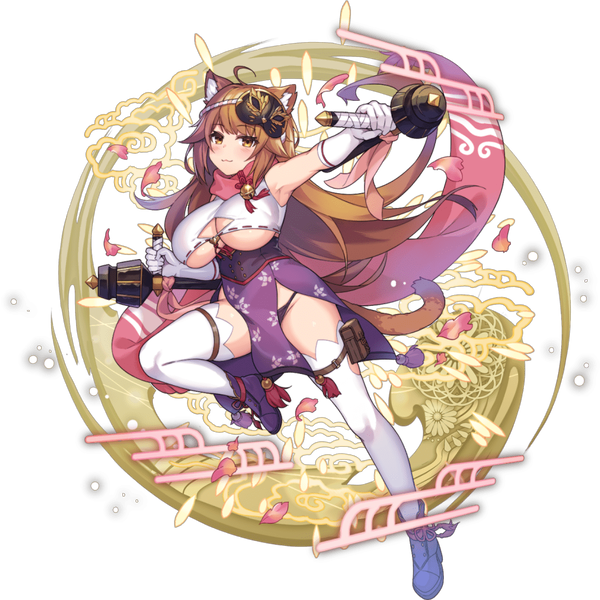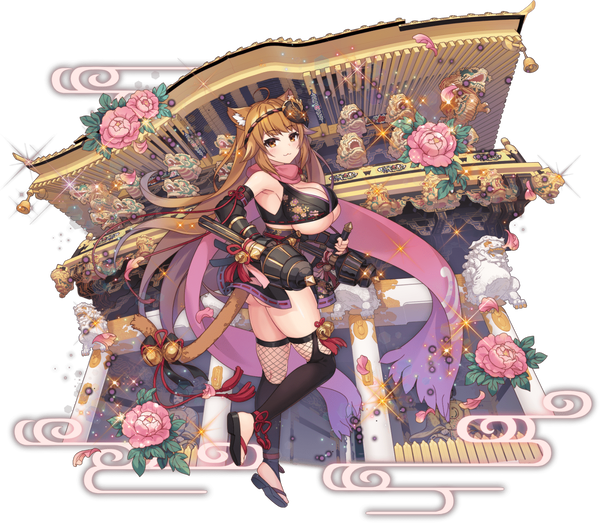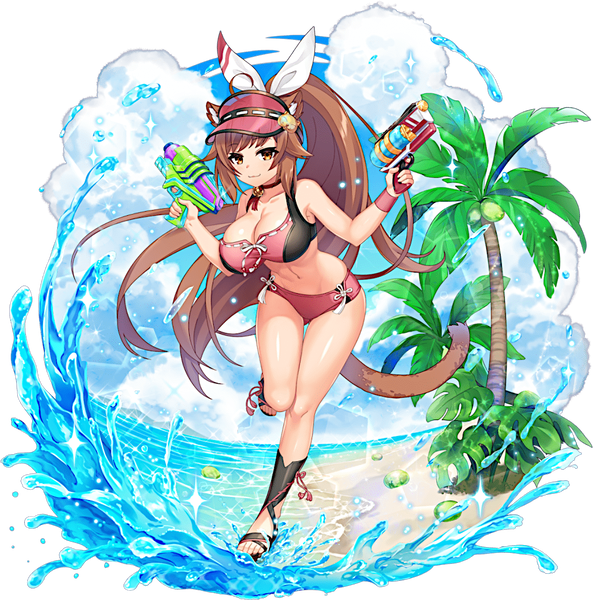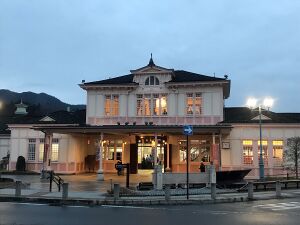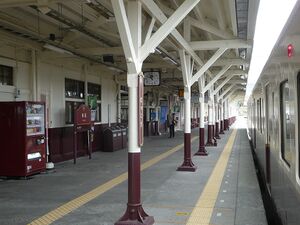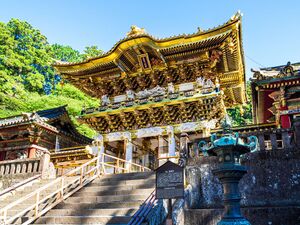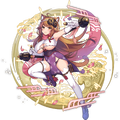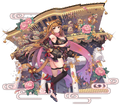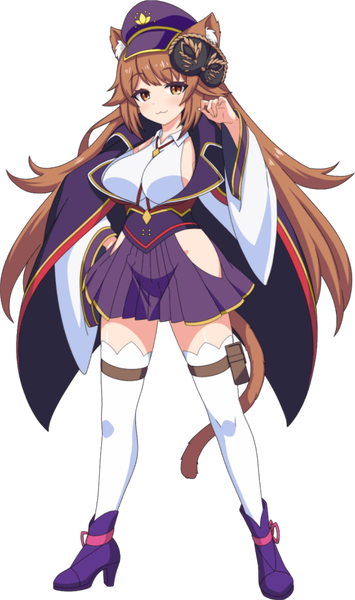
Nikkou
| Nikkou | |||||
|---|---|---|---|---|---|
| Japanese Name | ニッコウ | ||||
| Weapon | |||||
| Race | Beast | ||||
| Nationality | |||||
| Birthday | August 1 | ||||
| Constellation | Leo | ||||
| Talents | Distinguishing weapons and armor apart by their smell | ||||
| Likes | The tragic tale of Shibazakura the God of War | ||||
| Dislikes | Arguments | ||||
| Strengths | Able to be kind to anyone | ||||
| Weaknesses | Playing dumb | ||||
| Hobbies | Walks | ||||
Hi, Conductor! It's Nikkou! From Nishiki! So happy! Worked real hard training so Nikkou could finally join the Tsukiyo Banshuu! Gonna work even harder with Oshishou as part of the SSS! Thanks again for letting me join!
Layers
| Icon | Title | Release Date | Where to Obtain |
|---|---|---|---|
| [Tsukiyo Banshuu Optimist] Nikkou | 2021 August 16 | [Weasel of Tsukiyo Guards] Pick Up Gacha, Premium Gacha | |
| [Together with Shishou!] Nikkou | 2021 May 31 | [Administrative Society Messiah] Pick Up Gacha, Premium Gacha | |
| [Aspiration for the God of War] Nikkou | 2022 June 30 | [Necro Princess in the Underground Crypt] Pick Up Gacha, Premium Gacha | |
| [It's Summer! It's Swimwear! It's Catnip!] Nikkou | 2023 July 21 | [All-Out Summer! Polar Bear Floats and Water Guns] Limited Gacha |
Owned Skills
Trivia
- Nikkou's birthday is the opening date of Nikkōu Station in 1890.
- Nikkou's beast motif is the cat, though with her sleepy, sometimes lazy nature, this appears to be derived from the wooden statue "Nemuri-neko" in Nikkō Tōshō-gū Shrine.
- Nikkou's backstory as part of the samurai family may be a reference to Ieyasu Tokugawa, the founder of the Edo Shogunate, as his remains are enshrined in Nikkō Tōshō-gū.
- Shibazakura is Ohana's mother, known for her legendary prowess against the Daiyaki Disaster of Nishiki, gaining her title "God of War".
- The building in the background of [Aspiration for the God of War] is the Nikkō Tōshō-gū in Tochigi.
- Unlike other gauntlet users, Nikkou's weapons are tonfas, which believed to have originated in Okinawa (Due to being more commonly associated with the Okinawan martial arts, their true origin is heavily debated). They were first developed and used by Ryukyu islanders of Okinawa to defend themselves from Japanese samurai (around 1200 AD). Tonfas are also popular among police and armed forces, known as batons or T-batons.
- Nikkou [It's Summer! It's Swimwear! It's Catnip!] appears to be using water guns, but is still a Gauntlet weapon Layer.
Counterpart
Nikkō Station (日光駅) is a railway station in the city of Nikkō, Tochigi, Japan, operated by the East Japan Railway Company (JR East). Nikkō Station opened on August 1, 1890 as the terminal station for its branch lines. Nippon Railway, which was a private railway that built the current Tohoku Main Line. The opening ceremony was held at Nikko Station with the presence of Prince Komatsu Akihito.
Since the opening of the station, Nikko, with its beautiful scenery such as Nikko Toshogu and Lake Chuzenji, was one of Japan's leading tourist destinations, and the station was visited by many royal families and foreign tourists. The Nippon Railway was nationalized on November 1, 1906 and became a national railway station, and the line name was established on October 12, 1909, and the line to which Nikko Station belongs is was named Nikkō Line. The first station was a simple one-story building.
Construction of the second and current generation station building started on April 9, 1912 and was completed on the same year in August 25. Designed by Torao Akashi, a railway institute engineer at the time, the two-story building features a Neo-Renaissance half-timbered wooden Western-style, though he was not identified and verified to be the original designer until 2012.
In 1929, the Tobu Railway opened to Tobu Nikkō Station, beginning the competition between JNR and Tobu. Electrification of the Nikko Line was completed on September 22, 1959, and the semi-express "Nikko" using the deluxe 157 series was started to compete with Tobu Railway, but both the fare and the required time Tobu Railway was superior, and thus in 1982, the trains that went directly from Ueno were completely abolished, and there were no express trains departing or arriving at this station. From 2006, JR East resumed the limited express trains directly connected to the Tobu Railway in the Nikkō area, and since then, the direct limited express trains from JR have also arrived and departed at Tobu Nikko Station. The station building was renovated from May 2016 to March 2017 in line with the "Train Suite Shikishima" service which started operation in May 2017. Wikipedia
Nikkō Tōshō-gū (日光東照宮) is a Tōshō-gū Shinto shrine located in Nikkō, Tochigi Prefecture, Japan. Together with Futarasan Shrine and Rinnō-ji, it forms the Shrines and Temples of Nikkō UNESCO World Heritage Site, with 42 structures of the shrine included in the nomination. Five of them are designated as National Treasures of Japan, and three more as Important Cultural Properties.
During the Edo period, the Tokugawa shogunate carried out stately processions from Edo to the Nikkō Tōshō-gū along the Nikkō Kaidō. The shrine's annual spring and autumn festivals reenact these occasions, and are known as "processions of a thousand warriors". Also part of the beauty is the row of majestic trees lining the roadway, termed the Cedar Avenue of Nikkō.
Famous buildings at the Tōshō-gū include the richly decorated Yōmeimon, a gate that is also known as "higurashi-no-mon". The latter name means that one could look at it until sundown, and not tire of seeing it. Carvings in deep relief, painted in rich colors, decorate the surface of the structure. The next gate is the karamon decorated with white ornaments. Located nearby is a woodcarving of a sleepy cat, "Nemuri-neko", attributed to Hidari Jingorō. The stable of the shrine's sacred horses bears a carving of the three wise monkeys, who hear, speak and see no evil, a traditional symbol in Japanese culture. Hundreds of stone steps lead through the cryptomeria forest up to the grave of Ieyasu. A torii at the top bears calligraphy attributed to Emperor Go-Mizunoo. A bronze urn contains the remains of Tokugawa Ieyasu. Wikipedia
Map
Gallery
- Pages using Tabber parser tag
- Pages using DynamicPageList3 parser tag
- Weapon Gauntlet
- Beast
- Nishiki
- Leo
- Element Blow
- Element Fire
- Element Light
- Element Water
- Train Knights
- Japan

